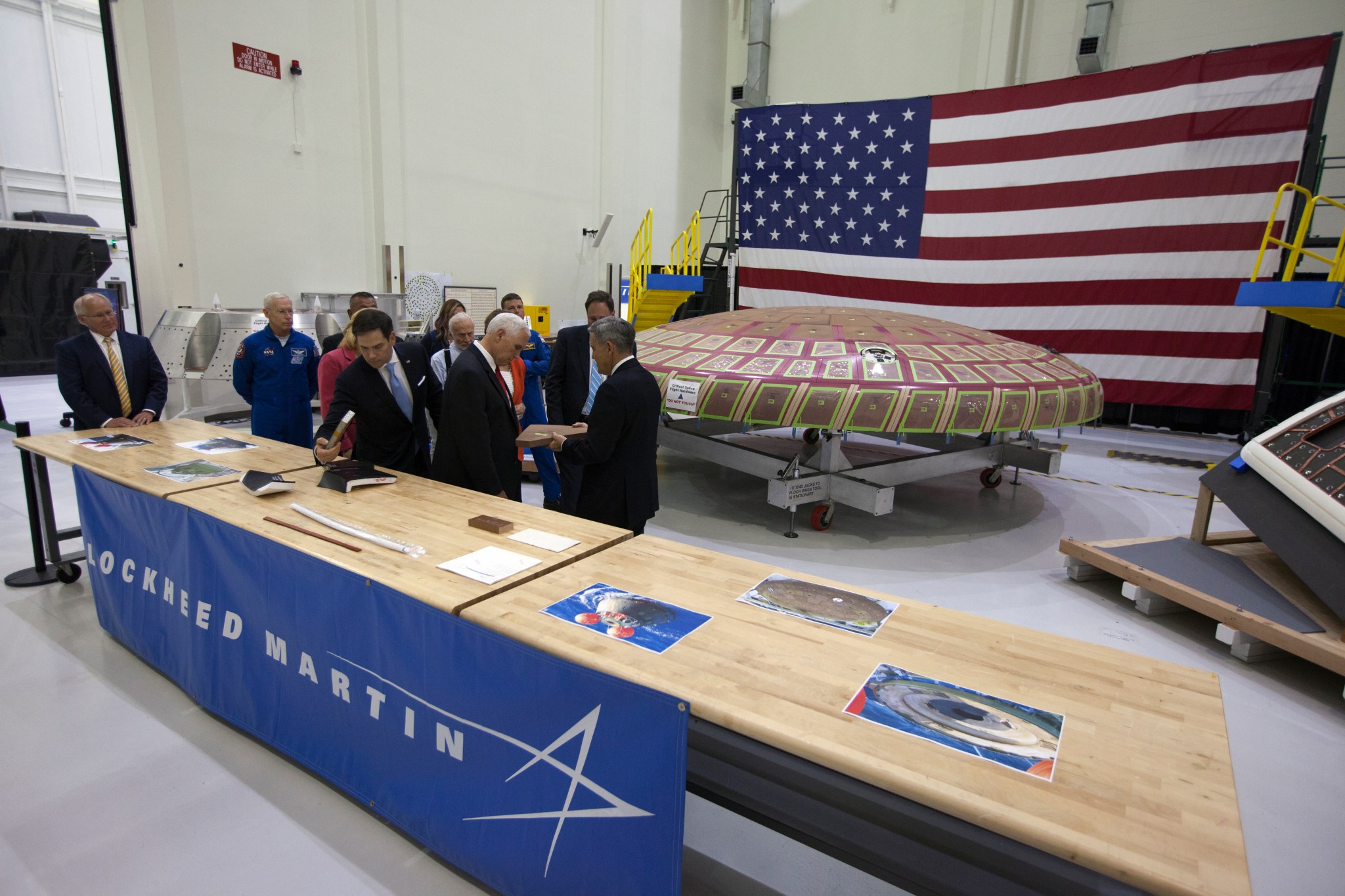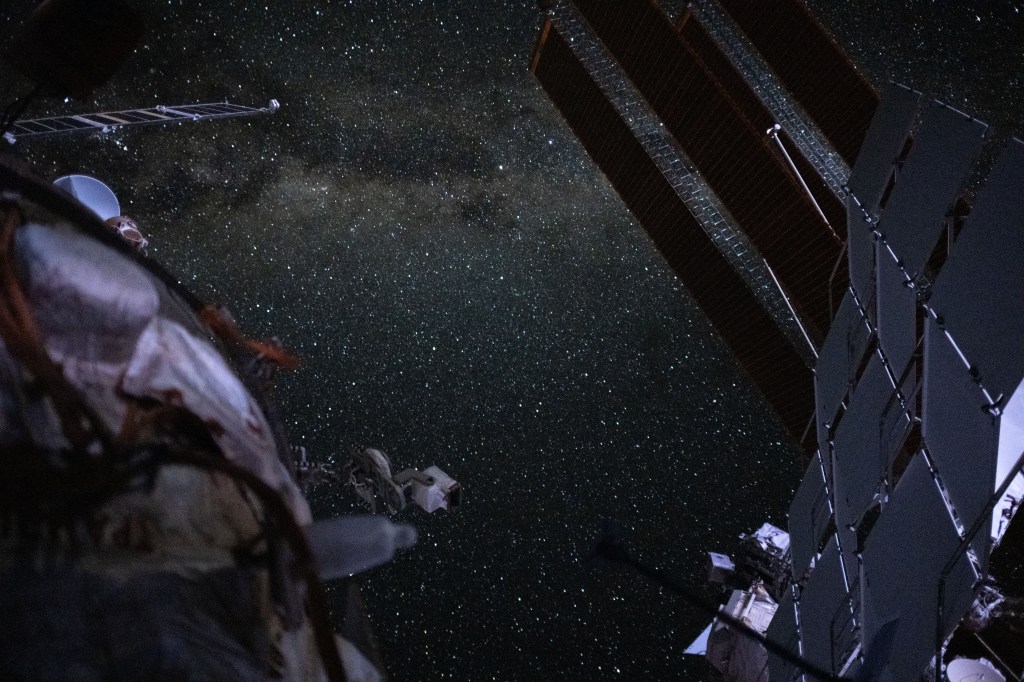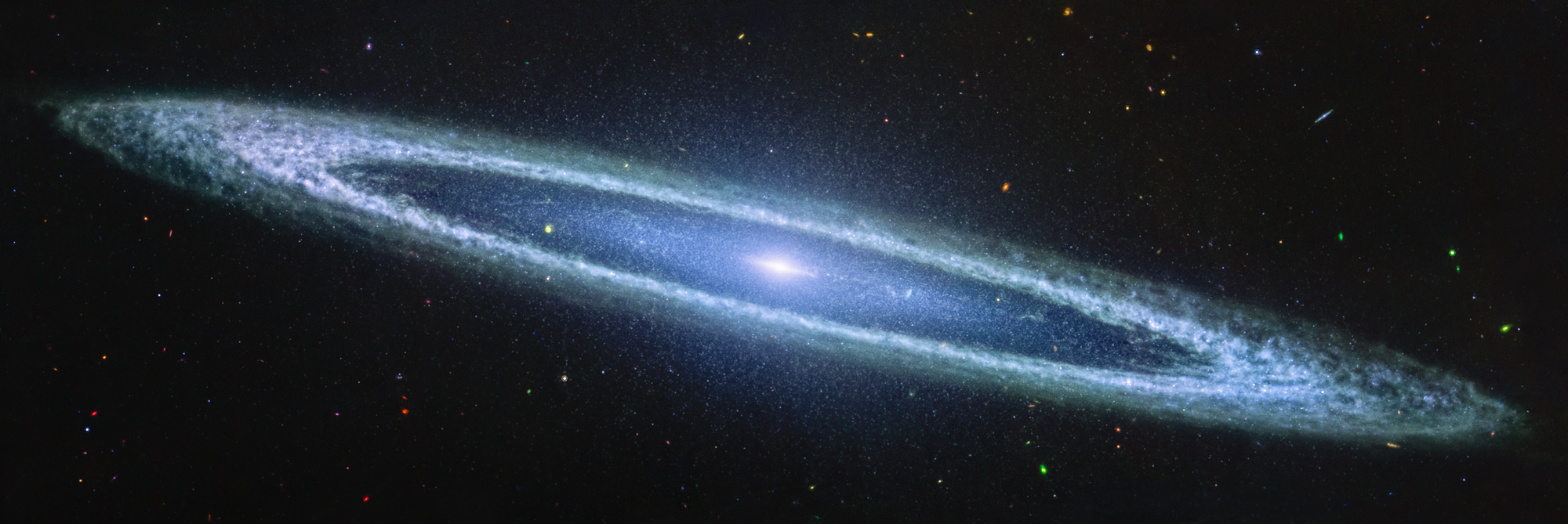Vice President Mike Pence saw a Florida spaceport Thursday poised in the starting blocks to return America’s human launch capability, begin a new era in deep-space exploration and capitalize on emerging partnerships with private industry.
Driving through much of the launch and processing facilities spread throughout the 144,000 acres of NASA’s Kennedy Space Center, Pence saw launch pads rebuilt for the needs of privately operated rockets, former space shuttle hangars refit to serve as spacecraft factories and the assembly hall for NASA’s own deep-space exploration spacecraft, Orion.

Former astronaut Bob Cabana, Kennedy’s center director, guided the tour for Pence who was making his first stop at the center since becoming vice president. As vice president, Pence will serve as chairman of the newly reformed National Space Council that will set goals and establish policies for the United States’ space efforts.
“When you look back in all of human history, only three nations have sent humans into orbit,” Cabana told community leaders recently. “Now, across Kennedy Space Center, there are four American companies building hardware and infrastructure to send humans into orbit: Lockheed Martin, SpaceX, Boeing and Blue Origin. That’s pretty amazing. When we look at the transition, we have an outstanding future and we have a great plan put into place.”
Remade from a center focused heavily on the government-run Space Shuttle Program, Kennedy now favors flexibility in its operations and infrastructure. The center has become more accustomed to opening its unique laboratory, processing and launch capabilities to private companies that would not have had the chance to use them before.
Practically every location Pence toured showed significant changes from what it had been. The inside of the Vehicle Assembly Building, where Pence spoke to part of the center’s workforce, continues to see installations that will allow it to host the stacking of the massive Space Launch System rocket, a behemoth more than 32 stories tall designed to launch astronauts far beyond Earth orbit on missions that will eventually include destinations past the moon and on to Mars. Unlike previous structures placed inside the VAB that were set up for one launch configuration only, the new platforms can be moved around and pieces replaced more easily to host many different arrangements of the SLS rocket. That gives mission planners more flexibility and allows the rocket to take the form best for the spacecraft it is launching.
The spacecraft in development for those deep-space missions, called Orion, is deep into its own manufacturing inside the Operations and Checkout Building in Kennedy’s industrial area ahead of a 2019 flight that will see it launch atop an SLS rocket and orbit the moon without a crew aboard.
Assembly is taking place in the same high bay that saw numerous spacecraft and modules come together and get tested before making their own historical trips. Orion, however, is much larger than those that came before and full of cutting-edge technology so astronauts can safely make their exploratory flights to broaden humanity’s knowledge of the worlds around our own. The high bay itself is also thoroughly modernized and shares little with its previous form aside from its shape.
While Orion has been designed by NASA and built by Lockheed Martin for future missions taking astronauts from Florida’s shores to the reaches of distant worlds, Pence was also shown the spacecraft, launch and mission facilities that will mark America’s return to human launch capability as soon as next year.
Working in close partnership with NASA’s Commercial Crew Program in a process new to human spacecraft development, Boeing and SpaceX are making independent spacecraft and launch systems to take astronauts to the International Space Station from America. Boeing is building a line of Starliner spacecraft and SpaceX is making a crewed version of its Dragon spacecraft. Both spacecraft, along with their launch vehicles, mission and launch control systems, are being certified by NASA for safety, reliability and cost-effectiveness.
Seen together, the transformation of the center shows the form of a spaceport that has embraced the potential of new partnership approaches while holding onto its heritage of success and broaden the range of exploration for the nation.




























